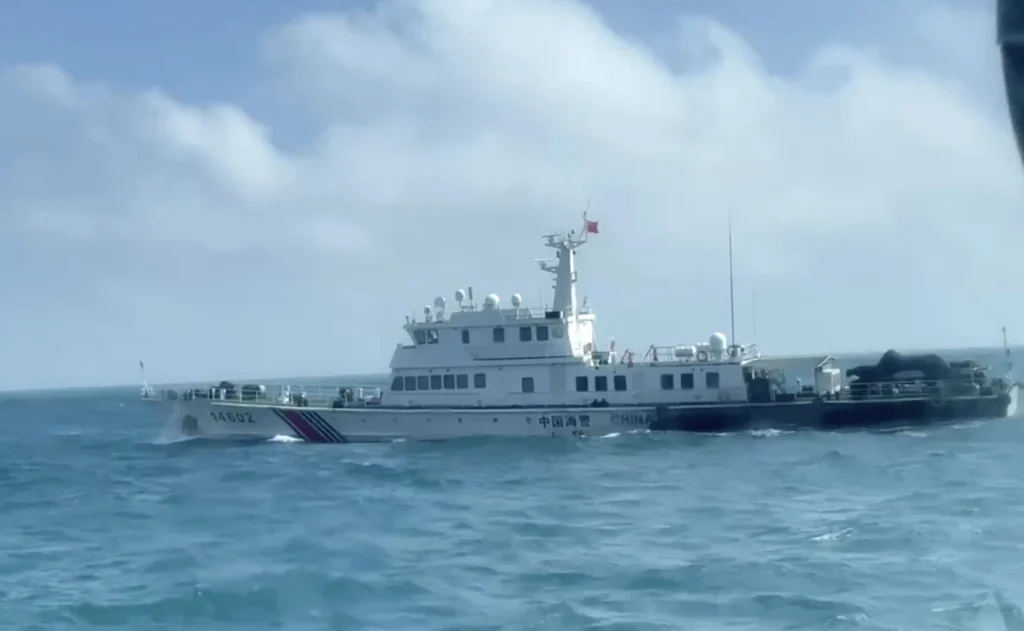China has launched military drills off Taiwan’s northern, southern, and eastern coasts as a “stern warning” against separatism, while labeling Taiwanese President Lai Ching-te a “parasite.” In response, Taiwan deployed warships to confront China’s navy encroaching on its territory.

The exercises, notably unnamed unlike last year’s war games, follow heightened rhetoric from Beijing against Lai and come shortly after U.S. Defense Secretary Pete Hegseth’s Asia visit, where he criticized China’s aggressive stance.
Beijing’s Eastern Theatre Command announced the drills involve naval ships, aircraft, and artillery, simulating blockades, ground and maritime strikes, and air interceptions to “test forces’ coordination in combat.”
Last May, just three days after Lai’s inauguration, Chinese forces staged war games aimed at seizing control of areas west of the first island chain, complete with live-fire missile drills. The Eastern Theatre Command called Lai a “parasite” in a video, depicting him as a green bug over a burning Taiwan.
Taiwan’s government swiftly condemned the drills, labeling China a “troublemaker” widely recognized by the global community. “The government is confident and capable of defending itself,” the presidential office asserted.
Rejecting Beijing’s sovereignty claims, Taiwan’s government reiterated that only the island’s people can decide their future. According to Taiwanese officials, over 10 Chinese military ships approached Taiwan’s 24-nautical-mile contiguous zone, prompting a response from Taiwan’s warships.
Taiwan’s Defense Ministry reported 71 Chinese military aircraft and 13 navy ships involved in the drills, though no live fire was detected. The ministry heightened military readiness to prevent any sudden attacks from China.
China’s Foreign Ministry defended the drills as “legitimate and necessary actions to safeguard national sovereignty.” Ministry spokesperson Guo Jiakun emphasized, “China’s reunification is an unstoppable trend—it will happen, and it must happen.”
In response to Chinese warships, Taiwan’s Defense Ministry confirmed the Shandong aircraft carrier group had entered the island’s response area. Taiwan dispatched aircraft, ships, and land-based missile systems to monitor the situation.
A senior Taiwanese security official noted Beijing likely sought to avoid direct confrontation with Washington ahead of U.S.-China trade talks. “Taiwan is their best excuse,” the official said, suggesting the drills were timed with Hegseth’s departure from Asia.
The American Institute in Taiwan, the de facto U.S. embassy, condemned China’s actions: “Once again, China has shown it is not a responsible actor and is willing to jeopardize regional security.”
China’s military released multiple propaganda videos under titles like “Closing In,” showcasing Chinese forces surrounding Taiwan. Another animation, “Shell,” depicted President Lai as a cartoon bug spawning parasites across the island with phrases like “Parasite poisoning Taiwan island. Parasite hollowing Island out.”
A third video, “Subdue Demons and Vanquish Evils,” featured Sun Wukong from the video game “Black Myth: Wukong,” portraying a mythical warrior before cutting to footage of Chinese fighter jets.
A fourth poster, “Enveloping Advance,” showed Chinese characters covering the island. Taiwan’s Defense Minister Wellington Koo denounced the rhetoric as provocative, urging Beijing to address internal corruption rather than destabilize the region.
Koo referenced a sweeping anti-corruption purge that led to the ousting of former Chinese Defense Minister Li Shangfu in October 2024. China’s Defense Ministry did not respond to Koo’s remarks.
The Global Times, owned by the Chinese Communist Party, noted the drill’s lack of a code name signified how military operations around Taiwan had become a “normal practice.” The outlet praised the exercises, claiming they boosted the PLA’s combat readiness.



